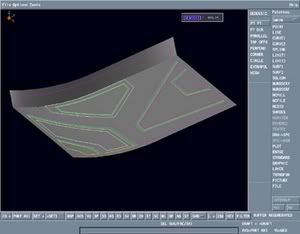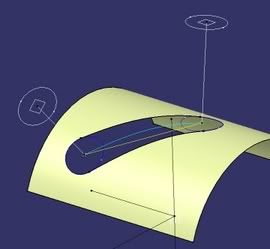lerxst
Aerospace
- Aug 25, 2005
- 2
How do I create a curve on a surface tangent to 2 other curves already on that same surface. The surface is a simple surface (surf1, curve, curve and the rads are the same). On that surface I have two circles created via Geodesic. Now I want to create a line atngent between those 2 curves on the same surface. How do you do it?




